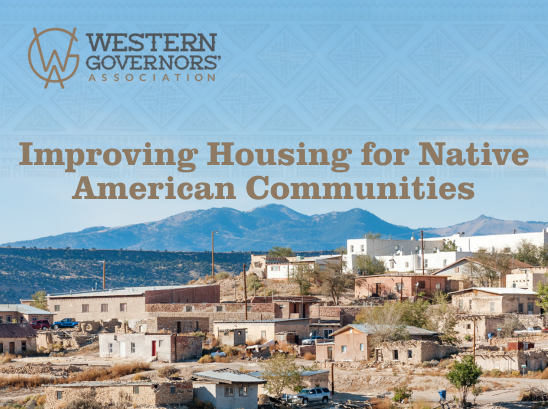08/26/25
WGA webinar explores strategies to improve housing for Native Americans

Native Americans, whether living on or off tribal lands, experience disproportionately higher rates of substandard housing and homelessness, along with significantly lower levels of homeownership, than other populations.
In this webinar, tribal housing advocates highlighted both the urgent challenges and promising solutions for improving access to safe, affordable, and culturally relevant housing in Native communities across the West.
Featured panelists included Rudy Soto, Executive Director of the National American Indian Housing Council; Dave Castillo, CEO of Native Community Capital; Jody Cahoon Perez, Executive Director of the Salish and Kootenai Housing Authority; and Paul Lumley, Chief Advancement Officer for the Native American Youth and Family Center.
Their discussion underscored the need to reauthorize the Native American Housing Assistance and Self-Determination Act (NAHASDA) and expand access to tax credits, supportive housing grants, and secondary mortgage markets like Fannie Mae and Freddie Mac. Panelists also stressed that long-term, sustainable partnerships are key to reaching larger capital markets and scaling housing solutions.
“I think a big part of what is missing is the partnerships expanding and being sustained, particularly in the work that we do on mortgage lending,” Dave Castillo said. “You know, the capital markets and financial institutions and the secondary market, that's what makes a mortgage market work, and we just do not have access to that.”
“On the reservation, we do things a certain way, the way we always did them, and it is sometimes in direct conflict of how the dominant society works,” Jody Cahoon Perez added. “It's like we're having to catch up with centuries of progress on the non-tribal side… we are evolving and we're trying to preserve our culture while we evolve. But we're doing it, and I couldn't be more proud of our progress.”